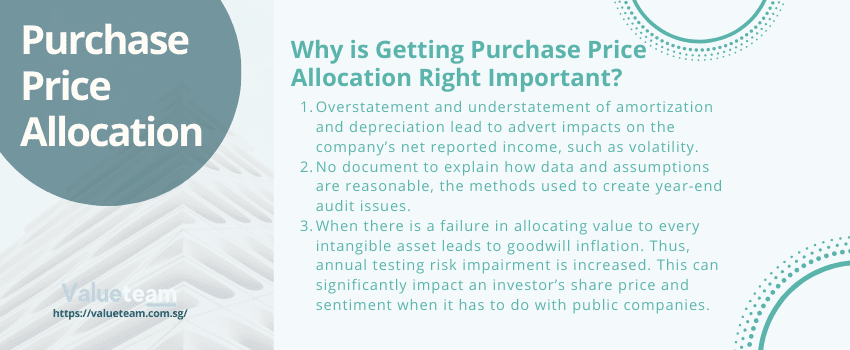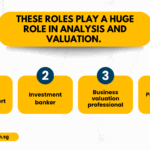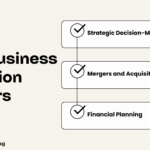In merger and acquisition, purchase price allocation valuation (PPA) is conducted when an acquirer gives the purchase price to the target company’s assets and liabilities received from the transaction. PPA is essential when reporting an account after a merger or acquisition is completed.
Quick Contact
Need Help?
Please Feel Free To Contact Us. We Will Get Back To You With 1-2 Business Days.
info@valueteam.com.sg
+65 9730 4250
Purchase Price Allocation Valuation

Components of PPA
Purchase price allocation valuation is made up of different components. They include:
1. Net identifiable assets
Net identifiable assets are the total value of an acquired company’s assets less the full amount of the acquired company’s liabilities. The “identifiable assets” are assets with a specific value at a particular time. They are assets that you can easily quantify and recognize benefits. An identifiable asset can be tangible or intangible.
2. Goodwill
Goodwill is the amount of money that is overpaid to the targeted company’s net value of their assets minus their liabilities. Goodwill amount is derived from the difference between the buying price and the total fair value of both the acquired company’s assets and liabilities in the market. Goodwill does not depreciate but can be amortized with time.
3. Write-up
A write-up adds value to a company’s assets. The amount of the write-up is gotten when an appraiser working independently completes his assessment of the target company’s asset’s fair market value.
Why is getting purchase price allocation right important?
Purchase price allocation valuation analysis has a massive impact on a company’s balance sheet and income statement, depending on the nature and size of the transaction. When a purchase price allocation is not done right, your business can be affected in many negative ways. They include:
- Overstatement and understatement of amortization and depreciation lead to advert impacts on the company’s net reported income, such as volatility.
- No document to explain how data and assumptions are reasonable, the methods used to create year-end audit issues.
- When there is a failure in allocating value to every intangible asset leads to goodwill inflation. Thus, annual testing risk impairment is increased. This can significantly impact an investor’s share price and sentiment when it has to do with public companies.
Therefore, it is crucial to approach this with detailed and comprehensive attention as a financial controller. When it is done well, you can get future earning guidance support. Also, when purchase price allocation is performed at an optimal level, perceived synergies and value can be realized.
How to deal with warrants if considered as part of purchase price allocation valuation?
It is a straightforward process in identifying tangible assets for value allocation, unlike identifying intangible assets, which can be overwhelming and challenging. Intangible assets have different classes based on their other characteristics in business. They include:
- Customer-related assets – customer relationships and contracts.
- Marketing-related assets – copyrights, contracts, and brands.
- Technology-related assets – unpatented technology, patents, and R&D projects.
- Human intellectual capital-related assets – preliminary agreements and assembled workforce.
When intangible assets meet any two criteria (control and separability), they are separately recognized.
Control – based on legal rights and contractual results.
Separability – capable of being licensed, sold, exchanged, rented, or transferred individually or together with other related liability or assets.




